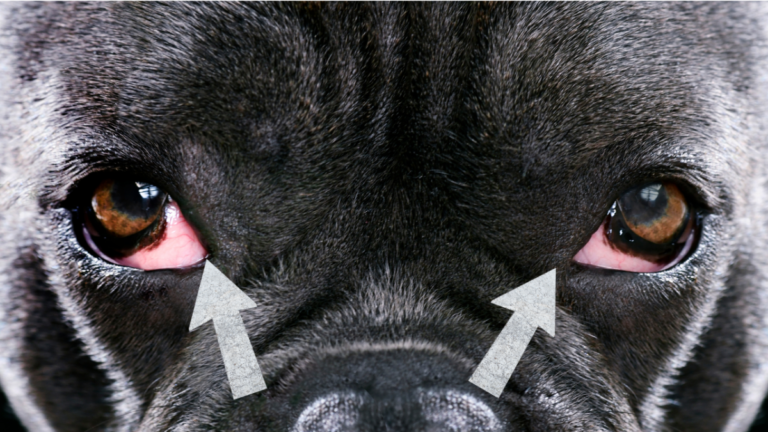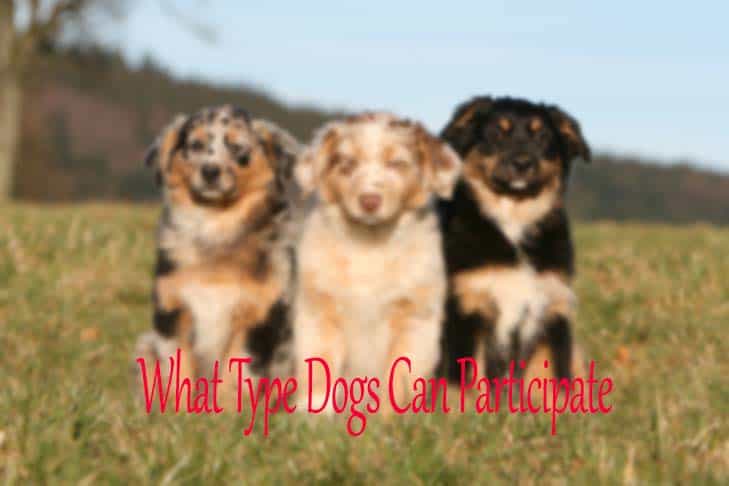Conjunctivitis in dogs can be a concerning issue for pet owners, especially when symptoms like third eyelid showing and squinting become evident. Understanding the underlying causes and how to manage these symptoms is crucial for the well-being of your furry friend. Third eyelid showing, known as the nictitating membrane, can indicate pain or irritation in your dog’s eyes, often associated with conjunctivitis. Squinting is another common sign of eye discomfort in dogs and can be a result of various factors, including infections or allergies.
In this blog, we delve deeper into the world of conjunctivitis in dogs, unravelling the mysteries behind third eyelid showing and squinting. Stay tuned to learn how to recognize, treat, and prevent conjunctivitis, ensuring your pet’s ocular health is always in top-notch condition.
Introduction to Conjunctivitis in Dogs
Conjunctivitis in dogs, also known as pink eye, is a common eye condition marked by inflammation of the conjunctiva—the thin, transparent membrane covering the eye’s white part. This condition can be irritating and uncomfortable for your furry friend.
Symptoms of Conjunctivitis in Dogs
Conjunctivitis typically presents with symptoms such as third eyelid showing and squinting. Other signs include redness, discharge, and swelling around the eye.
Causes of Conjunctivitis in Dogs
Conjunctivitis in dogs can be caused by various factors including allergies, foreign objects in the eye, and infections. Understanding the underlying cause is crucial for effective treatment.

Causes of Conjunctivitis in Dogs
Conjunctivitis in dogs, often indicated by third eyelid showing and squinting, can have various causes, leading to discomfort and redness in their eyes.
Infections
Dogs can develop conjunctivitis due to bacterial, viral, or fungal infections, including pathogens like bacteria and viruses.
Allergies
Seasonal changes or exposure to environmental allergens like pollen can trigger allergic reactions in dogs’ eyes, causing conjunctivitis.
Foreign Objects
Foreign objects such as dust, dirt, or grass can get lodged in a dog’s eye, leading to irritation and inflammation, which results in conjunctivitis.

Third Eyelid Showing in Dogs
When a dog’s third eyelid is showing, it can be a sign of medical issues, including conjunctivitis. The third eyelid or nictitating membrane serves to protect the eye and keep it moist. If it becomes visible, it may indicate pain, irritation, or inflammation in the eye, prompting further investigation.
Causes of Third Eyelid Showing
Conjunctivitis in dogs is a common cause of the third eyelid showing. Other reasons may include eye infections, foreign objects in the eye, corneal ulcers, or even more serious conditions such as glaucoma.
Symptoms to Watch For
Look for signs of redness, discharge, squinting, or excessive tearing in your dog’s eyes. In addition to the third eyelid showing, these symptoms may indicate conjunctivitis or other eye issues that require veterinary attention.
Signs and Symptoms of Squinting in Dogs
When observing your dog, if you notice it squinting or keeping one eye partially closed, it could be indicating an underlying eye issue. This behavior is often a sign of discomfort or pain in the eye.
Redness and Irritation
Dogs with squinting may exhibit redness and irritation in the affected eye. The conjunctiva, the thin membrane covering the eye, may appear inflamed.
Excessive Tearing
Another symptom of squinting in dogs is excessive tearing or watery discharge from the eye. This can be a sign of an infection or injury.
Diagnosis of Conjunctivitis in Dogs
Conjunctivitis in dogs can be diagnosed through a thorough ocular examination by a veterinarian. The most common signs include third eyelid showing and squinting, among others. During the examination, the vet will look for redness, swelling, discharge, and any abnormalities in the eye.
Diagnostic Tests
Veterinarians may perform various tests to confirm conjunctivitis, such as:
- Fluorescein Staining: To detect corneal ulcers or scratches.
- Microbial Culture: To identify the specific bacteria or virus causing the infection.
- Schirmer Tear Test: To assess tear production in case of dry eye as a predisposing factor.
Underlying Causes Assessment
It is essential to identify the root cause of conjunctivitis to provide appropriate treatment. Causes may include allergies, foreign bodies, trauma, dry eye, or underlying health conditions.
Treatment Options for Squinting Dogs
When your dog is squinting due to conjunctivitis or other eye issues, prompt treatment is crucial to prevent further discomfort and potential complications. Here are some treatment options:
1. Veterinary Examination
First and foremost, a thorough examination by a veterinarian is essential to identify the underlying cause of your dog’s squinting. The vet may perform various tests to diagnose the specific condition accurately.
Your veterinarian may recommend eye drops for conjunctivitis.
2. Medications and Eye Drops
Depending on the diagnosis, your vet may prescribe medications such as antibiotics, anti-inflammatories, or antiviral drugs to address the root cause of the squinting.
- Follow the vet’s instructions carefully for administering medications.
- Regularly apply prescribed eye drops to alleviate discomfort and aid in the healing process.
Frequently Asked Questions
- What is conjunctivitis in dogs?
- Conjunctivitis in dogs is the inflammation of the conjunctiva, which is the thin transparent membrane that covers the white part of the eye and lines the eyelids.
- Why does a dog’s third eyelid show when they have conjunctivitis?
- The third eyelid, also known as the nictitating membrane, can show in dogs with conjunctivitis due to inflammation and irritation of the eye, causing the eye to be more sensitive and possibly resulting in the protrusion of the third eyelid.
- What causes squinting in dogs with conjunctivitis?
- Squinting in dogs with conjunctivitis can be caused by the discomfort and pain associated with the inflamed eye. Dogs may squint to protect their eyes from further irritation or to try and alleviate the discomfort.
- How is conjunctivitis in dogs treated?
- Treatment for conjunctivitis in dogs depends on the underlying cause. It may involve medication such as eye drops or ointments, as well as addressing any contributing factors such as allergies or infections.
- Can conjunctivitis in dogs be contagious?
- Conjunctivitis in dogs can be caused by infectious agents such as bacteria or viruses, making it potentially contagious to other dogs. It is important to practice good hygiene and avoid contact with infected dogs to prevent the spread of the condition.
Final Thoughts: Understanding Conjunctivitis in Dogs
Conjunctivitis in dogs can be a concerning issue for pet owners, but by being aware of the common signs like third eyelid showing and squinting, you can take prompt action to seek veterinary care. Remember, early detection and treatment are key to managing this condition effectively. Keep an eye on any changes in your dog’s eyes and behavior, and don’t hesitate to consult with a professional if you notice any symptoms.
By understanding the causes, symptoms, and treatments for conjunctivitis, you can help your furry friend stay comfortable and healthy. Remember, a proactive approach to your dog’s eye health is always the best course of action. Here’s to keeping those doggy eyes bright and healthy!



